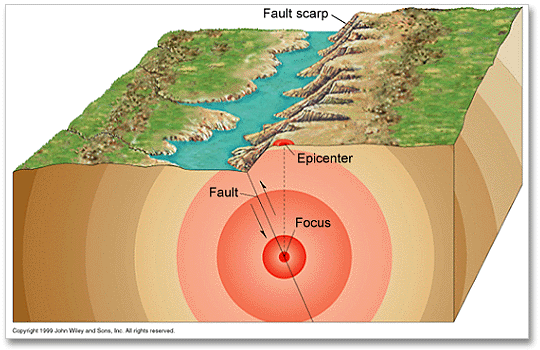An earthquake is a shaking and vibration of the ground caused mainly by a sudden release of energy in the Earth’s crust due to constraints suffered by rocks situated in deeper layers of the Earth, namely the solid mantle (included in the litosphere) and the molten mantle (the asthenosphere).

Earthquakes are characterised by their magnitude (seismic energy measured on the Richter scale) and their hypocentre (the underground fault movement location) and the epicentre (the surface location situated just over the hypocenter).
Considering two earthquakes releasing the same seismic energy, in general the deeper the hypocenter, the wider is the impact areas on the surface; large seismic faults with very high depths can produce very destructive earthquakes over hundreds of square kilometres.